
ABOUT THE AUTHOR
Tui De Roy is a photographer, conservationist, writer and has lived in the Galápagos since she was young. See more of her work at tuideroy.com and read her paper in Ecology & Evolution at onlinelibrary.wiley.com.
IT STARTED ONE afternoon as I sat on the edge of a deserted Galápagos cliff, gazing over the sea. Absorbed in a quiet reverie, I had no inkling that I was about to witness a spectacle so incredible that it would - five years and 2,400 photographs later - lead to my first-ever scientific paper, despite having no formal academic credentials.
Ever since Charles Darwin's famed visit almost two centuries ago in 1835, the Galápagos Islands have been renowned for their remarkable array of unique flora and fauna - none more so than their extraordinary reptiles. Iconic giant tortoises and marine iguanas have long stolen the attention of the world, with some very special birds following close behind, such as Darwin's finches, Galápagos penguins and flightless cormorants.
MAMMALS, ON THE OTHER hand, are lacking, represented by just a handful of rodents and bats, and two pinnipeds of the Otariid family, known as the eared seals or more commonly as sea lions and fur seals. These agile, fast-swimming social creatures propel themselves with their front flippers, unlike true seals, which use slower, rear flipper propulsion.
The Galápagos archipelago lies slap bang on the equator, 930km off the west coast of Ecuador. Nowhere else in the world have these high-energy marine mammals conquered a tropical habitat, usually preferring the higher latitudes, where marine productivity tends to be much higher. In this regard, the Galápagos Islands buck the trend.
Cooperation vs competition
هذه القصة مأخوذة من طبعة August 2022 من BBC Wildlife.
ابدأ النسخة التجريبية المجانية من Magzter GOLD لمدة 7 أيام للوصول إلى آلاف القصص المتميزة المنسقة وأكثر من 9,000 مجلة وصحيفة.
بالفعل مشترك ? تسجيل الدخول
هذه القصة مأخوذة من طبعة August 2022 من BBC Wildlife.
ابدأ النسخة التجريبية المجانية من Magzter GOLD لمدة 7 أيام للوصول إلى آلاف القصص المتميزة المنسقة وأكثر من 9,000 مجلة وصحيفة.
بالفعل مشترك? تسجيل الدخول

SNAP-CHAT
Justin Gilligan on giant spider crabs and holding hands with an octopus
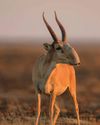
STEPPE CHANGE
Herds of saiga have returned to Kazakhstan, but there's a fine balance to tread
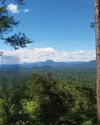
TREES FOR LIFE
Community is at the heart of conservation in the tropical forests of southern Belize
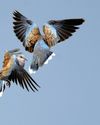
WHEN DOVES CRY
Turtle doves are now the UK's fastest declining bird species, but the RSPB is on a mission to save them

SURVIVAL OF THE CUTEST
We can't help being drawn to cute creatures, but our aesthetic preferences both help and hinder conservation
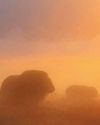
LIGHT ON THE NORTH
Spectacular images of Arctic foxes, reindeer and musk oxen reveal the wild beauty and diversity of Scandinavia
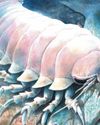
ROLLING IN THE DEEP
The super-sized crustacean that lives in the deepest, darkest ocean
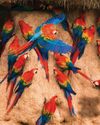
LET'S GET TOGETHER
Clay licks deep in the Amazon explode in a riot of colour, with macaws the stars of the show
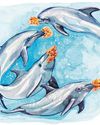
FEMALE OF THE SPECIES
To sponge or not to sponge? That is the question for the bottlenose dolphins (Tursiops aduncus) living in Shark Bay, Western Australia.
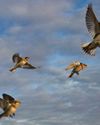
7 nature encounters for the month ahead
WITH NATURALIST AND AUTHOR BEN HOARE